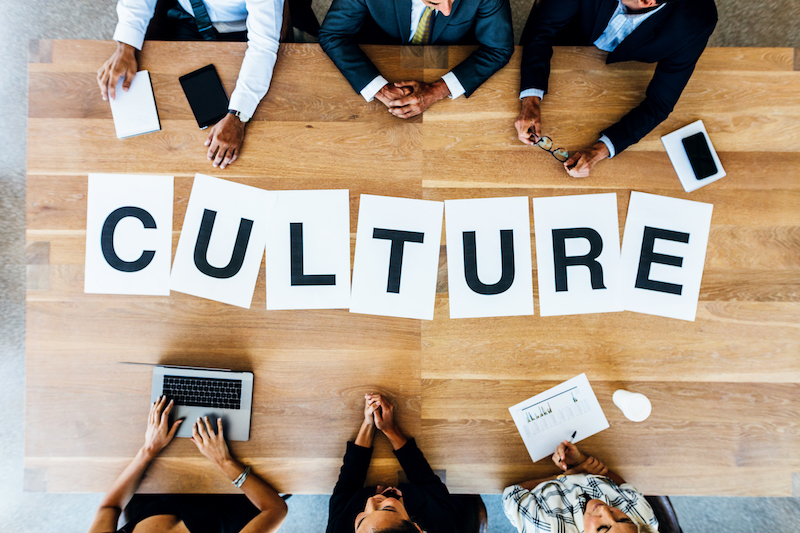

Columns/Blogs
Culture
Who actually ‘owns’ your organization’s culture?
By Brian Kreissl
 Culture helps create empowerment, accountability and belonging so associates become change agents for the business. (Jacoblund/Getty Images)
Culture helps create empowerment, accountability and belonging so associates become change agents for the business. (Jacoblund/Getty Images) Last week, I discussed the importance of organizational culture and how it isn’t the “touchy-feely” concept I once thought it was. Every company has its own unique rules, norms, values, expectations, behaviours and ways of doing things.
While HR is often thought of as the keeper of an organization’s culture, HR doesn’t actually “own” a company’s culture. Culture is held by all members of an organization, with senior leaders occupying a special place in relation to shaping and managing cultural change, modelling appropriate behaviours for others to follow and communicating their vision of a desired future end state.
Leaders need to have the required skills and competencies and fit with the organization’s culture. Generally, the higher up a senior leader goes within the organization, the more important soft skills and cultural fit become.
Strategic considerations are also important when planning cultural change. However, the phrase “Culture eats strategy for breakfast,” attributed to management guru Peter Drucker, shows that even a well-planned strategy can sometimes be derailed by a strong culture.
The role of employees
If rank and file employees don’t buy into cultural change or aren’t aligned with espoused values and organizational rules and norms, it will be very difficult to lead and manage cultural change and transformation, or actually have people behave in accordance with cultural norms and values. Employees at all levels have the power to stifle cultural transformation – particularly if they don’t buy into the need for the change.
Every company has established ways of doing things, and it can be notoriously difficult to change an organization’s culture. Many CEOs have embarked on a cultural transformation journey, only to find they were thwarted by people’s entrenchment with the status quo.
Planning for, identifying and overcoming resistance to change is very difficult in any change management initiative, but it is doubly difficult when attempting to change an organization’s culture. This is especially true in a large organization where leading, managing and championing change feels like turning a massive ocean liner.
The role of HR
HR can certainly help but simply cannot do it all alone. Nevertheless, the HR function has an important role to play in assessing, managing, curating, tweaking and transforming an organization’s culture.
Change management is also an important task for HR, although senior leadership generally identifies the need for organizational change in the first place. This often takes the form of an executive sponsorship, whether the change is a cultural one or not.
According to the Society for Human Resource Management (SHRM), HR is responsible for ensuring an organization’s culture continues and thrives. It argues organizations should have a strong culture that HR can support through talent acquisition, onboarding, training and employee communications.
Referring to HR as the “caretaker” of an organization’s culture, SHRM argues the function can help to build and manage a strong organizational culture. However, HR is unlikely to be successful if they don’t have the support of senior leaders or the organization’s workforce.
It is also important for HR to have a deep understanding of what the organization’s culture is really like, or at least to have a solid grasp of the desired end state when cultural change is embarked on by the business. This can sometimes be problematic when the espoused values don’t necessarily mesh with the reality on the ground. For that reason, it is important for HR to get out of their offices and meet, observe and talk to employees in the workplace.
Another problem is that different teams, units, departments, lines of business, functions and locations often have their own unique subcultures. This is even more common in a multinational organization where national culture has a role to play in determining norms, rules, values, priorities and interactions among people.
While there should be an overarching corporate culture that impacts everyone in the organization, different parts of the business will be different. While HR needs to be cognizant and tolerant of that, sometimes there needs to be a cultural shift to align things more closely to the overall corporate culture.
This is never truer than in the case of a merger or acquisition, since lack of cultural fit is often cited as the main reason why mergers ultimately fail. While some cultural change will be necessary in a merger, if the cultures of the two organizations are too different to begin with, the merger may ultimately fail.
Brian Kreissl is a product development manager with Thomson Reuters in Toronto. He looks after HR, payroll, OH&S, records retention and Triform. He can be reached at brian.kreissl@thomsonreuters.com or (416) 609-5886. For more information, visit https://store.thomsonreuters.ca/en-ca/home.
Print this page
